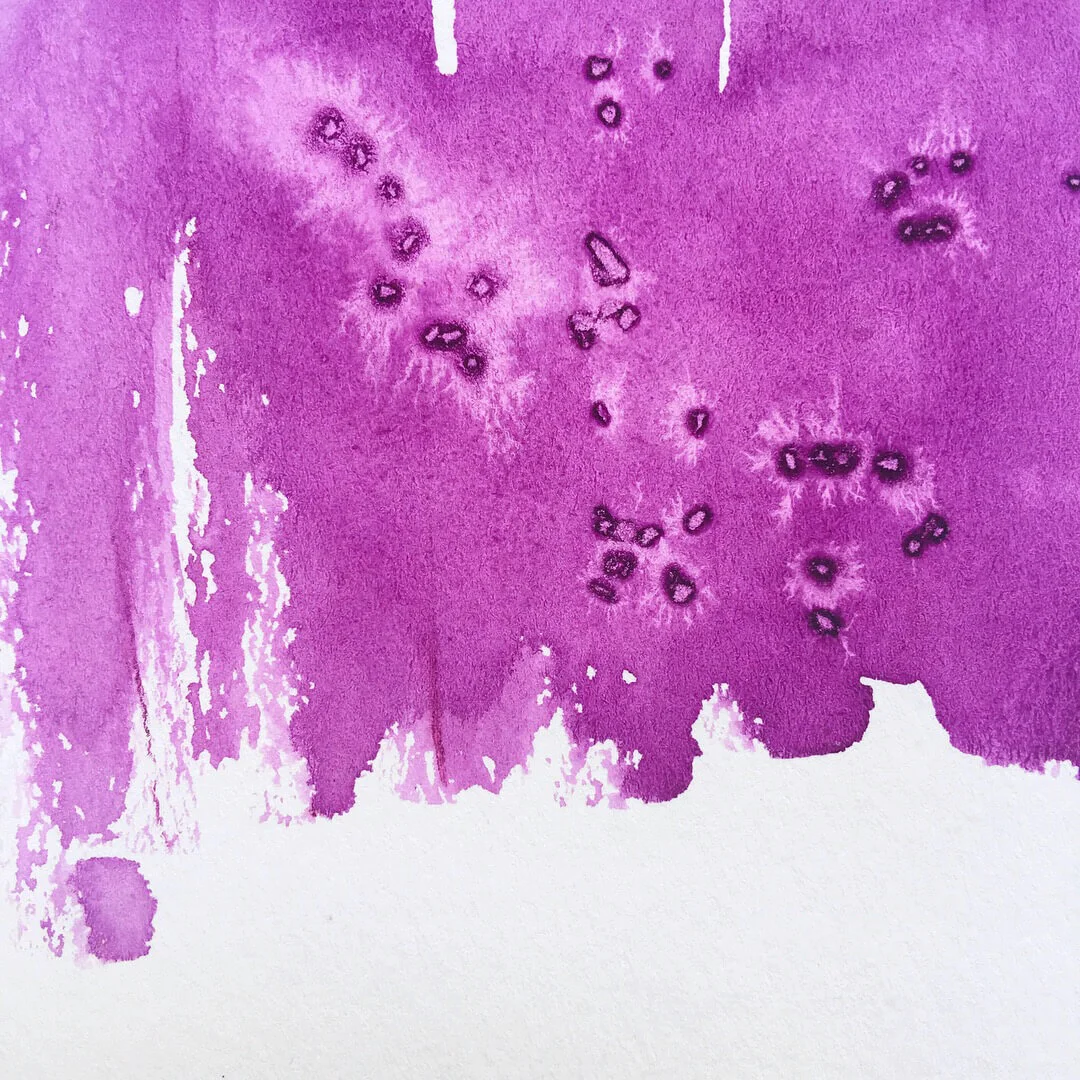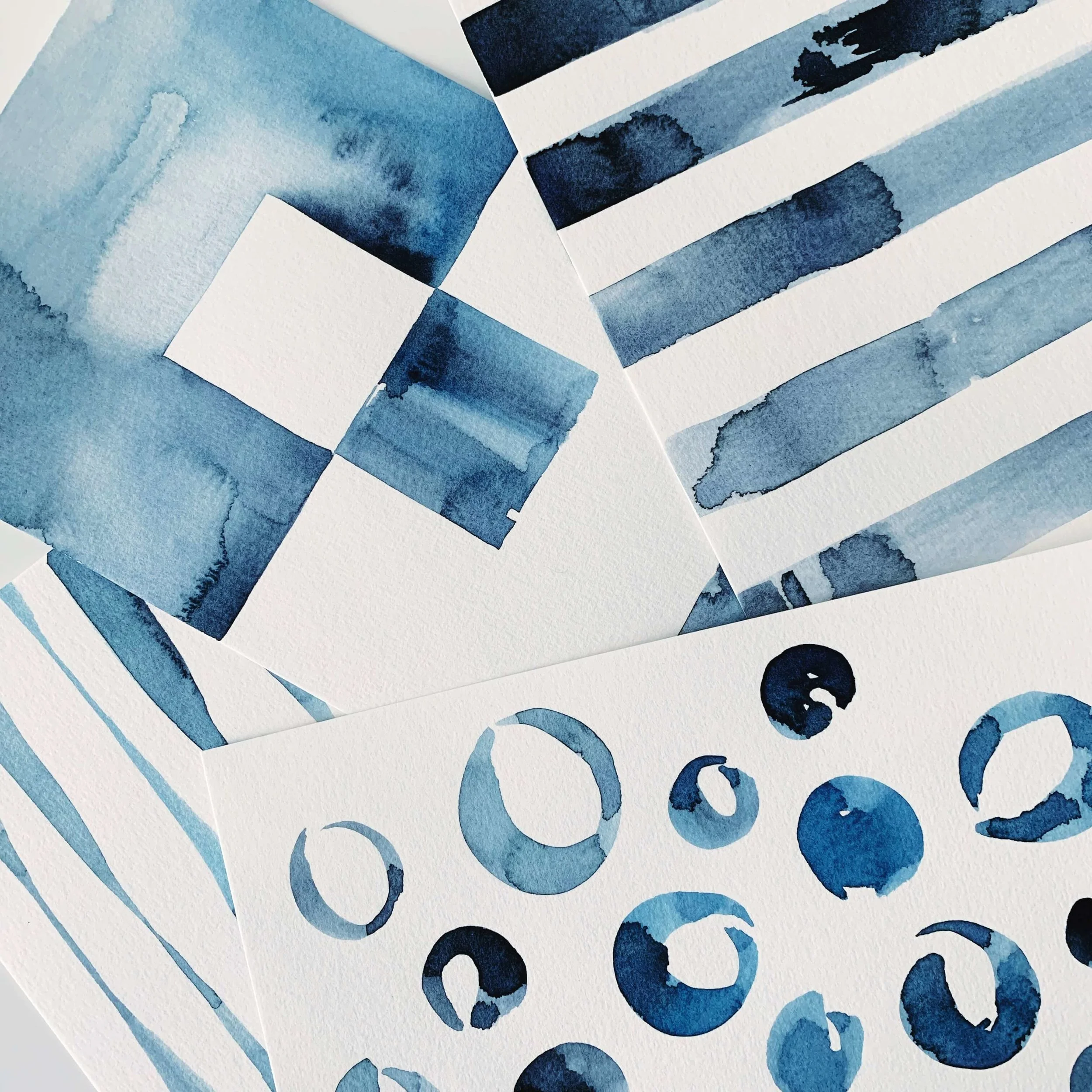How To Paint Ballerina Figures With Watercolor
Today, I’m sharing with you how I painted these simple, abstract ballerina figures using watercolors.
I received this question from a student in my online watercolor course, Just Watercolor and thought it would be a great one to share on the blog.
Here was her exact question:
I absolutely love your ballet girls. How did you do them? How did you keep them simple and abstract? Was it a happenstance movement of a brush that created them initially, or were you trying to create exactly that? What inspired them? How did you do them? How big are they? Did they turn out differently than you envisioned? Did you make mistakes and have to start over?
How To Mix Pastel Colors Using Watercolor
If you’ve ever wondered about how to make pastel colors using watercolors, I’m sharing all about it in this blog post.
You might have heard that when painting with watercolors, white is not used. So if that’s the case…how do you make pastel colors, right?
The Best Watercolor Supplies To Buy On Amazon
Amazon has made a lot of things available at just the push of a button and while it can be dangerous for the wallet, it does mean access to many art supplies at affordable prices. Not to mention, miscellaneous tools and supplies that I find myself using quite a lot.
Today I’m going to share with you what I think are the best watercolor supplies you can get on Amazon.com.
Easy Watercolor Peach Painting for Beginners
I painted a bunch of peach slices the other day to digitize for September's monthly wallpaper and decided to film it just in case I wanted to share it with you. It’s not the best quality, but I thought it might help to share the video and talk through what I was thinking when I painted them.
How to Digitize Watercolor Paintings
It’s said that no experience in life is ever wasted, that everything you learn is valuable. This is true for me when it came to digitizing my artwork.
I spent 13 years in architecture learning and using Adobe Photoshop, Illustrator, and InDesign for graphics and presentations. So when it came to digitizing my watercolor paintings, I pretty much already knew how - which was so helpful!
For those you that are just figuring this out and are less familiar with the software programs, I’m going to show you how I get my watercolor paintings into my computer and cleaned up using Adobe Photoshop.
10 Fun Watercolor Techniques To Try
If you're just getting into watercolors or you've been painting for a while, sometimes it's fun to just experiment with techniques that you don't normally use when painting. I usually only paint using the basic watercolor techniques (see #1-#3) , but some of these are really fun to play around with, even if it's not for a final painting.
I especially love playing around with experiments like this if I find myself at a loss for ideas or not wanting to sit down to paint any subject in particular!
So here's a quick round up of 10 fun watercolor techniques that you can give a try (if you haven't already!)
Watercolor Tutorial: Herringbone Pattern
When I decided to “doodle” this pattern into my sketchbook last year and record it, I had no idea that it would be so popular. I posted a video of it to Instagram and it has (for some crazy reason) been shared by quite a few of those viral video accounts.
I want to be on the record to say, I am the first person in line to agree that this pattern is by no means a crazy feat or even close to being a masterpiece. I actually came across a hilarious comment from someone responding on one of those video accounts that basically asked: “Why is everyone so amazed by this, it’s not like she’s Picasso.” I laughed and still can’t agree more!
Why Watercolor Is So Hard (and why you should embrace it)
Watercolor has the reputation of being difficult. It has been know to cause feelings of frustration, defeat, and disappointment. Especially for those who are just starting out and all they want is to paint something they can be proud of.
In the beginning stages of learning, we tend to take things very seriously and put our full concentration into that subject. With painting, this can manifest in the form of control. Control works well with mediums like acrylic - where the paint acts in a predictable way. It goes where you put it and the color you see on your palette is the color you get on your paper. Watercolors don’t act that way, which means that the more you try to control them, the more difficult the experience might feel.
3 Myths About Watercolors That Are Holding You Back
Since becoming immersed in watercolors through painting and teaching I’ve witnessed may hesitations that hold people back from getting started with watercolor painting. And all of them (that I’ve seen and heard) are myths.
Here are 3 common myths about watercolors I observed that hold people back.
1. I am not creative
2. I need to be able to draw
3. I should start with student grade supplies - I’m not good enough to use artist grade
Sound familiar? I wouldn’t be surprised!
The Ultimate Guide to Watercolor Papers for Beginners
If there was one watercolor supply I would say you shouldn’t skimp on, it would be paper. Good watercolor paper is, hands-down, the most important factor to success with watercolors. I think there are many others out there that would agree with this statement! I’ve read it for myself on numerous blogs, in facebook comments, and even when chatting with fellow painters.
Once you experience quality watercolor paper, it’s like a lightbulb goes off and you realize: THIS is why people love watercolor painting.
So if you’re just getting started with watercolors maybe you’ve come across terms like stretching, paper-weight, blocks, and sizing, and it seems unclear where you should start and WHY these are important. So I’ve broken down the basic aspects that are important in watercolor papers below along with a graphic summary. Hopefully this will help make sense of it so you can make more informed decisions when choosing your paper!
3 Reasons Watercoloring Is More Than Just Learning to Paint
Watercolor, simply put, is water mixed with pigment which is then applied to paper. But painting with watercolors is something entirely different. It can be complex, confusing, and fun at the same time.
Learning how to paint with watercolors is more than just watercoloring. Those of us who love it and want to keep getting better aren’t in it just to paint pretty pictures. Have you ever asked yourself why you want to learn, why you want to get better, and why it can be so rewarding? I’ve thought about it and here are 3 reasons why I think watercolors are so much more than just learning to paint.
3 Watercolor Brush Stroke Exercises to Practice Brush Control
I think of watercolors a little like modern calligraphy. It’s loose, there aren’t hard and fast traditional rules because it’s such an expressive and fluid medium. With watercolors, you can paint anything from a very loose abstract image to a super detailed photorealistic painting. No matter which style, however, there are still basic principles and techniques that we need to understand in order to be able to paint with watercolors.
One foundational skill in watercolors is understanding your brush, the strokes it can make, and how to handle it. In this post, I’m going to share 3 brush stroke exercises that you can do with a round tip brush to practice control get really comfortable with the strokes and shapes your brush is capable of












